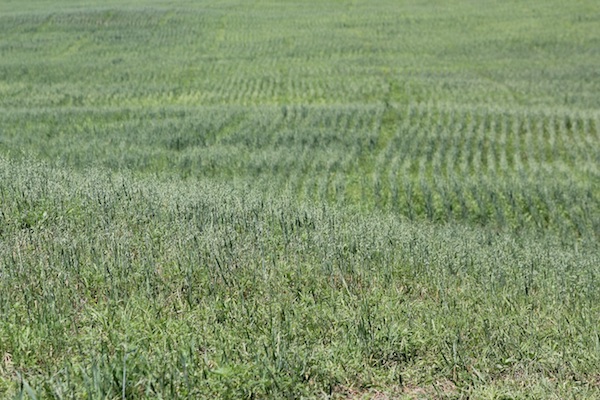Getting the Most Out of Oat Pasture
May 2017

Many people are trying oat pasture this spring. The potential seems great, but you may be disappointed if you don’t graze it right.
Oat pastures have increased in popularity in recent years. They can reduce problems from drought and provide fast, early grazing. Oat pastures can be very productive and last through early summer, but they also disappoint sometimes. While we don’t know all we need to know, here are a few grazing recommendations that will help you succeed.
Oats grows rapidly. Once it gets five or six inches tall, it quickly can shoot up to a foot tall in almost no time. As nice as this sounds, if initial oat growth gets that tall it may not stool out, tiller, and regrow after grazing very well. So it’s important to start grazing early and to graze hard enough to keep your oats vegetative and leafy, thereby stimulating it to constantly form new tillers.
So how early is early? That’s hard to say, but if your animals start to first graze when oats get six to eight inches tall and they remove just half the growth it should recover rapidly and tiller well. You probably will need to give your oats a couple weeks to regrow after this first grazing, though, before grazing again.
After this first grazing stimulates tillering, keep oat regrowth between six and sixteen inches tall using either continuous or rotational stocking. Begin with a light stocking rate, maybe about one animal every two or three acres. Then adjust animal number as oat growth changes. Don’t worry if a few plants head out. But if many plants get tall and approach the boot stage, either stock heavily for one last hard graze-out grazing or consider cutting for hay.
We will need to experiment a bit to perfect it, but oat grazing looks promising.
Reference
Bruce Anderson, Nebraska Extension Forage Specialist
University of Nebraska–Lincoln
back to Beef Forage Crops Systems